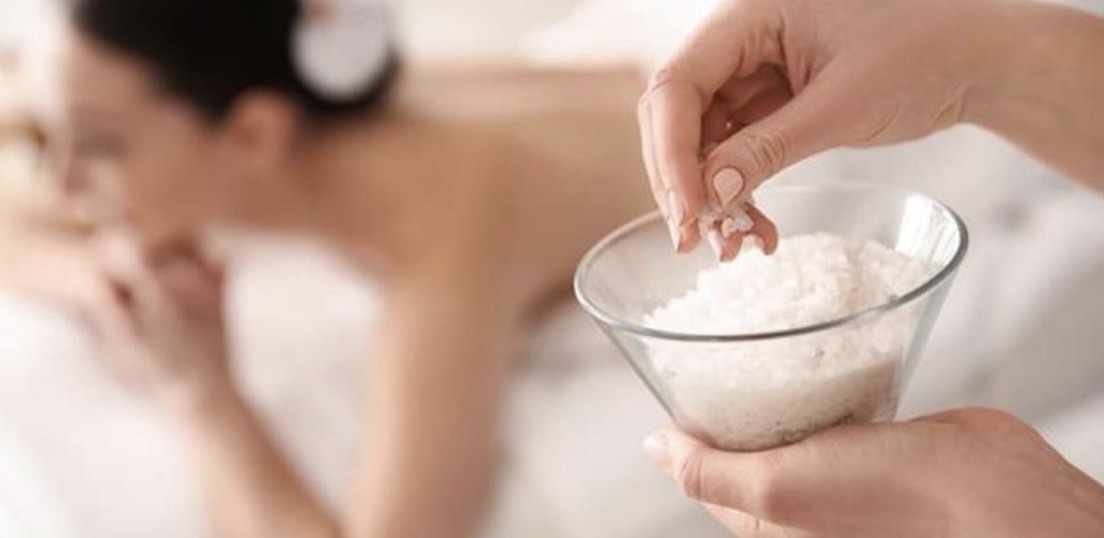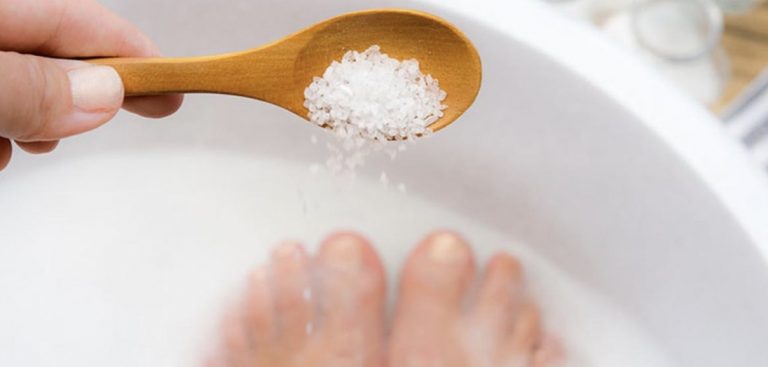Epsom salt, composed of magnesium sulfate crystals, is commonly used to help relieve various minor health conditions. Soaking in Epsom baths can ease muscle soreness, while topical Epsom salt pastes or compresses are sometimes recommended as home remedies for issues like splinters, bruises, sprains, and boils. When it comes to open wounds, some claim Epsom salt also aids healing and prevents infection when applied directly. But is this actually effective, or even safe? Essentially, does Epsom salt truly heal wounds? Let’s explore.
Story Stages
What is Epsom Salt?
Epsom salt is a naturally occurring pure mineral compound made up of magnesium, sulfur, and oxygen. It gets its name from the springs in Epsom, England where it was originally discovered. In addition to bath salts, Epsom salt has uses as a gardening fertilizer and medicine. It has antiseptic qualities and has been clinically proven to help reduce swelling and relax muscles when used externally. However, it also has the potential to severely dehydrate living tissues when overused, so proper caution is necessary.
Epsom Salt’s Antibacterial Properties
When it comes to infected wounds, people ask: does Epsom salt kill bacteria? In high concentrations, research indicates it can be antimicrobial against some strains that commonly infect wounds like Staphylococcus Aureus and Escherichia Coli. Its salt content draws moisture out of bacteria cells via osmosis, effectively dehydrating them. However, Epsom salt potency depends on mineral levels which vary greatly, so its ability to disinfect cannot be guaranteed. Overusing it may also dry out healthy tissue and delay healing. While it does possess antibacterial traits, Epsom salt is not a scientifically proven antibiotic and does not discriminate between beneficial and harmful bacteria.
Using Epsom Salt on Minor Wounds
For dealing with everyday small scrapes, some integrative healers suggest using Epsom salt as a home remedy once wounds have initially clotted. To treat superficial wounds, they create an Epsom salt paste by mixing it with a small amount of water or combining it with olive oil or aloe gel. Gently dabbing the paste onto damaged skin may help reduce inflammation and discomfort associated with initial healing by drawing out toxins. This allows oxygen and nutrients to better access the wound. It may also prevent potential infection by protecting the site from grime and germs getting inside. However, using it too soon after an injury can disrupt essential clotting function and provoke more swelling. So most advise waiting until coagulation and immediate bleeding subsides before applying any Epsom dressings.
Risks of Using Epsom Salts on Large Deep Wounds
While Epsom salt might offer some topical relief for minor cuts and skinned knees according to anecdotal wisdom, it is not suitable for serious wounds in lieu of medical intervention. Large gaping gashes, puncture wounds, and lacerations often require stitches, wound debridement, and intravenous antibiotics. Does Epsom salt kill bacteria festering deeply inside traumatized tissue? Research does not confirm crystallized magnesium sulfate possesses enough antimicrobial potency to significantly protect vulnerably exposed interiors from multiplying infection. Can it still pull toxins outward? Perhaps, but at the potential cost of desiccating raw sensitive flesh and muscle prematurely. Dehydration also thickens blood viscosity making circulation more sluggish to deliver immunological defenses. Any clot dependency disrupted too soon further risks uncontrolled bleeding internally and externally.
Seeking emergency care remains imperative for rapidly tending to trauma damage safely with proper hemorrhaging controls, surgical irrigation, sutures, and prescription antibiotic orders customized per contamination assessments. Delaying this scientific sterile care in favor of attempting rudimentary home cures only gives invasive pathogens more undeterred time inhabiting sensitive physiology which modern medicine is much better equipped to address and contain. While some traditional practitioners insist otherwise, extensive peer-reviewed medical research supports immediately seeking emergency assistance after suffering significant blood-gushing lacerations rather than making do with makeshift mineral salt compresses minus deeper interventions. Solely relying on external mineral absorption sans assessment for potential artery involvement proves deficient, even negligent for deep wound severity. Only doctors can fully diagnose insidious activity brewing underlying once the skin damage gets patched up on the surface to seem stabilized but deeper structures remain vulnerable beneath.
Using Epsom Salt for Boils and Abscesses
For dealing with localized skin infections like boils and abscesses which manifest as inflamed pus-filled lumps, using Epsom salt may supplement medical treatment. To help naturally draw out embedded infections toward the surface, create an Epsom soak by dissolving ample mineral salts into pure hot water. Soak the affected area for 10-15 minutes 2-3 times daily, allowing magnesium sulfate compounds to penetrate pores and extract toxins toward eruption points. However, should swelling or redness worsen/persist beyond days or infection appear to spread further invading healthy regions an urgent care facility must immediately assess for underlying MRSA, staph, or other serious bacteria colonies possibly requiring surgical drainage, IV antibiotics, and calcified tissue debridement. applications cannot promise to eliminate such harmful colonies alone if they’ve already secured footholds internally so physician guidance remains essential should home treatments flounder. But when incorporated appropriately into doctor-supervised care, Epsom salt’s antimicrobial characteristics may quicken healing times as extractive qualifying compresses. Through osmotic dehydration properties, magnesium sulfate salts may pull contaminants from boil/abscess sites but deeper involvement needs addressing by professionals first.
Healing Effects of Epsom Salt Baths and Soaks

While directly placing Epsom salt onto vulnerable open wounds proves questionable, utilizing it dissolved into baths and soaks supports healing indirectly. By immersing injuries like sprains, bruises and post-surgical sites into warm mineralized water, the magnesium ions absorb transdermally providing localized benefits. Epsom salt baths increase inflammation-reducing magnesium levels in the blood, relax muscle tissue, boost toxin elimination through the skin (drawing out splinter debris for example), and improve oxygen/nutrient circulation to damaged areas. Measure 2 cups per full bathtub and soak sore spots for 30 minutes to reduce agony, swelling, and tenderness. The hydrating moisture also softens scab formation preventing cracking and scar worsening which aids recovery. However, avoid soaking fresh unclosed wounds until scabbed as moisture hinders clotting scab formation early on. Again patience remains key allowing initial wound sealing by our bodies first before exploiting Epsom salts’ healing hydration effects.
Wound Healing Requires Holistic Support
While using some Epsom salt applications may supplement recovery, healing any wounded areas fully ultimately requires holistic healthy support: resting sufficiently, eating enriching nutritious foods (or taking vitamins/supplements if dietary options lacking), practicing stress-relieving self-care, exercising in moderation, avoiding alcohol which slows the immune response, staying hydrated and being patient with bodily processes. Support self-repair by gently cleansing around wounds once sealed versus over-drying scabs prematurely. Allow some light clothing friction which trains new skin to grow tougher. But listen to any persistent pain as a cue not to overuse healing limbs indicating possible complications needing medical attention, not just home cures. Providing compassionate care until cells knit together again makes your body feel safe to mend itself. Attending follow-ups while avoiding re-injury gives regeneration its best probability by confirming internal healing aligns with outward appearances. Wholistically nurturing through the entire lifecycle from infliction to closure helps all recovery facets-physical, mental, and emotional.
Conclusion
In summary, while Epsom salt deserves some first aid credibility drawing out infections in minor scrapes and soothing sprains when combined with water immersion, relying solely on its antimicrobial properties to adequately treat significant wounds, especially large traumatic punctures, remains medically inadvisable. Deep lesions require urgent specialized care and interventions only hospital treatment can sufficiently provide to prevent life-threatening risks the average layperson cannot properly recognize or intervene with home cures alone. So as a supplemental remedy and extraction-enhancing soak aid, Epsom salt merits integrative considerations but fails clinically as a standalone sufficient wound magic bullet for major trauma, abscesses, and infections needing prescription measures applied by doctor directives first and foremost.
